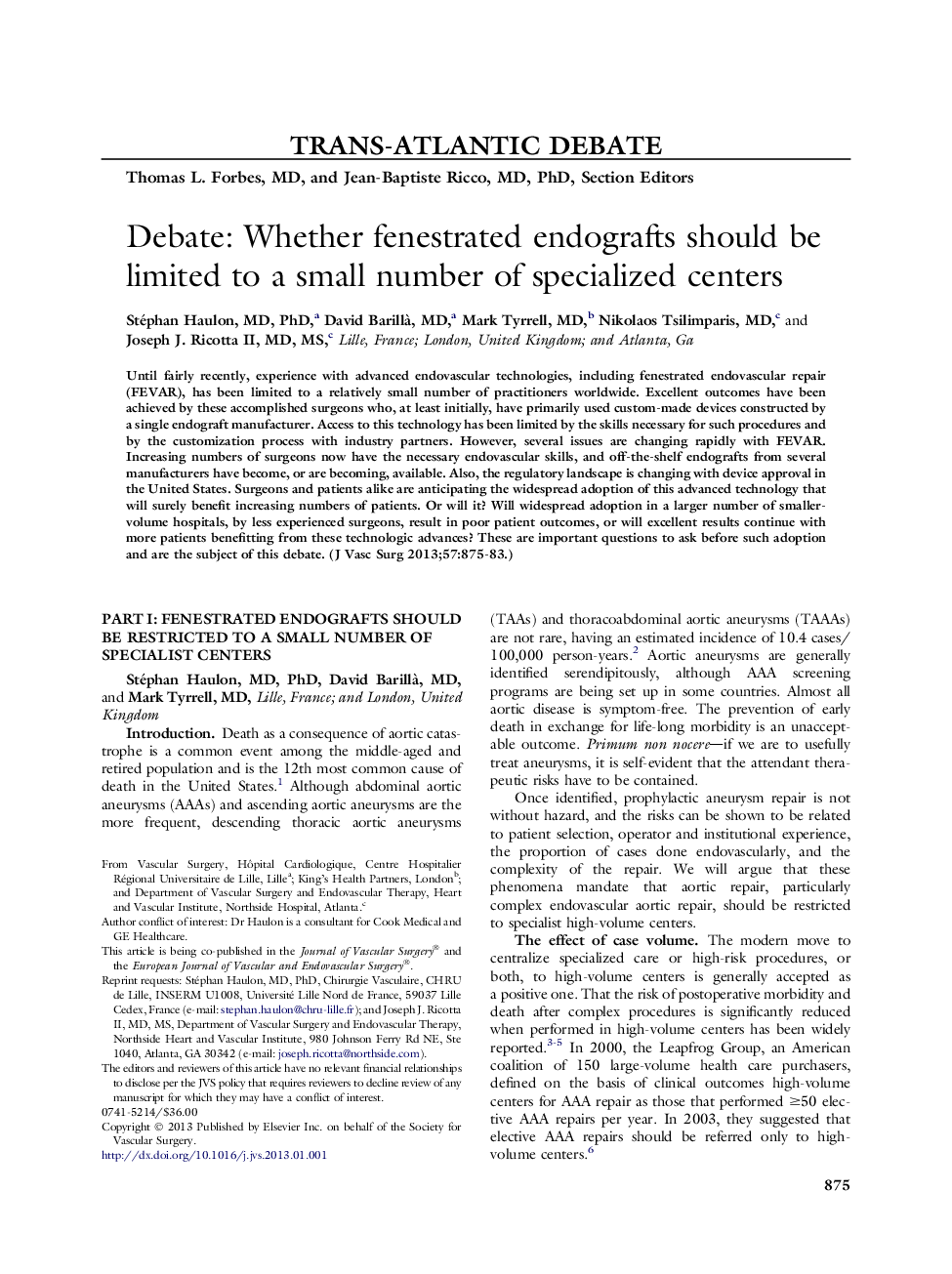| Article ID | Journal | Published Year | Pages | File Type |
|---|---|---|---|---|
| 2989828 | Journal of Vascular Surgery | 2013 | 8 Pages |
Until fairly recently, experience with advanced endovascular technologies, including fenestrated endovascular repair (FEVAR), has been limited to a relatively small number of practitioners worldwide. Excellent outcomes have been achieved by these accomplished surgeons who, at least initially, have primarily used custom-made devices constructed by a single endograft manufacturer. Access to this technology has been limited by the skills necessary for such procedures and by the customization process with industry partners. However, several issues are changing rapidly with FEVAR. Increasing numbers of surgeons now have the necessary endovascular skills, and off-the-shelf endografts from several manufacturers have become, or are becoming, available. Also, the regulatory landscape is changing with device approval in the United States. Surgeons and patients alike are anticipating the widespread adoption of this advanced technology that will surely benefit increasing numbers of patients. Or will it? Will widespread adoption in a larger number of smaller-volume hospitals, by less experienced surgeons, result in poor patient outcomes, or will excellent results continue with more patients benefitting from these technologic advances? These are important questions to ask before such adoption and are the subject of this debate.
